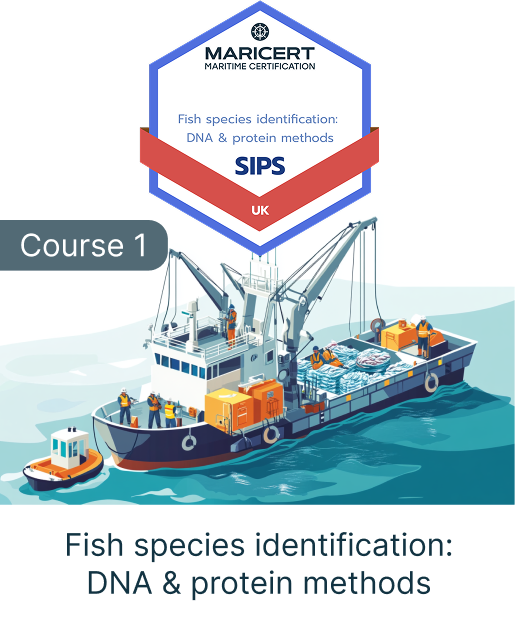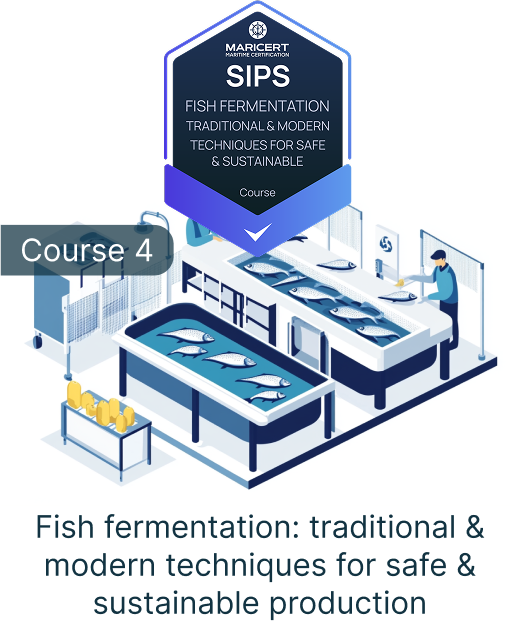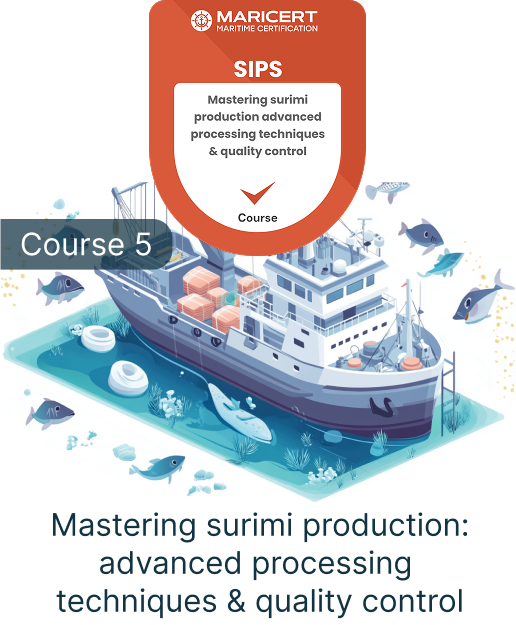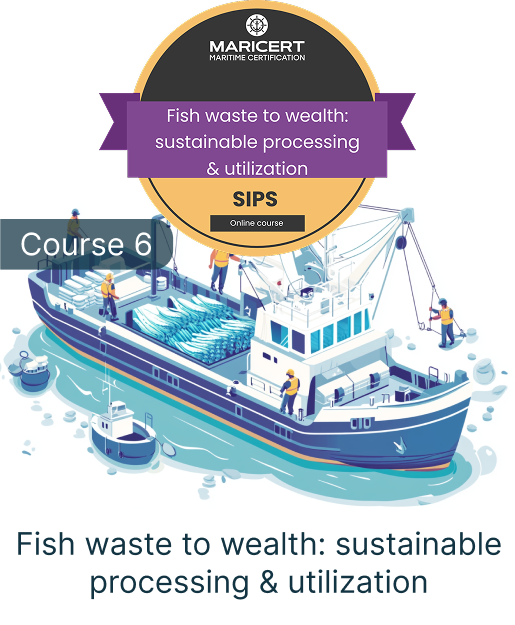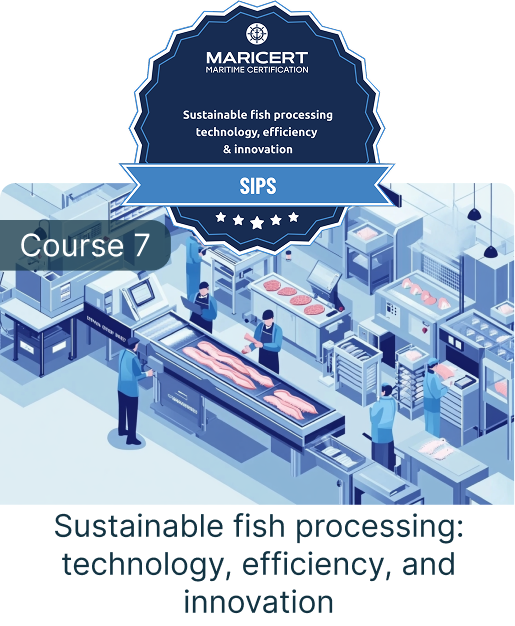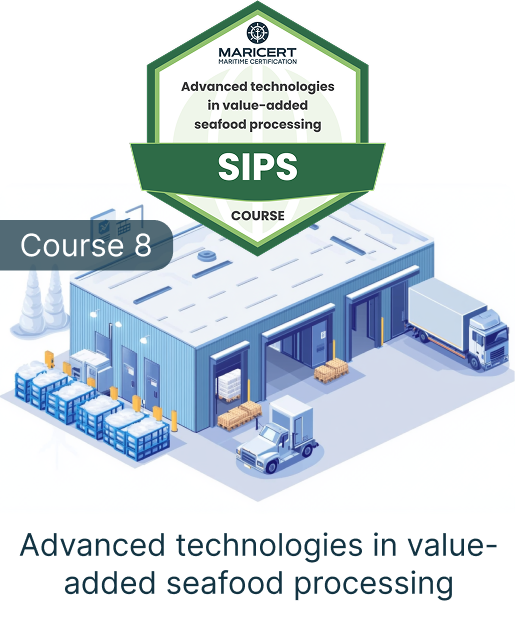Fish species identification: DNA & protein methods
LESSONS
- Glossary
- Seafood authenticity and species verification
- Molecular markers in seafood species identification
- Genetic and protein markers in seafood authentication
- Electrophoretic techniques for seafood species identification
- Isoelectric focusing and electrophoresis in seafood ID
- HPLC and immunological methods in seafood identification
- DNA-based methods for seafood identification
- PCR–RFLP and real-time PCR in seafood species identification
- Alternative DNA methods for fish species identification
- References
- Test
- Certificate

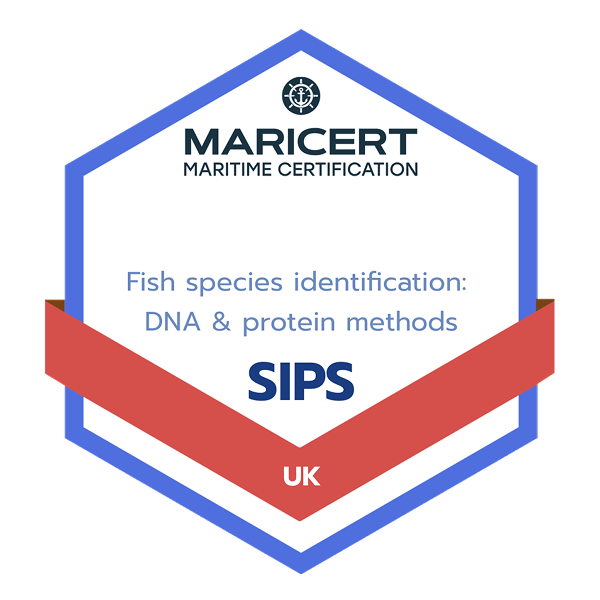
Duration
7–9 hours for studying the theoretical material, 2 hours for completing the final test.
Certificate
Upon successful completion of the online course, you will receive a certificate titled:
"Advanced Seafood Processing & Safety: Extending Shelf Life".
lifetime certificate.
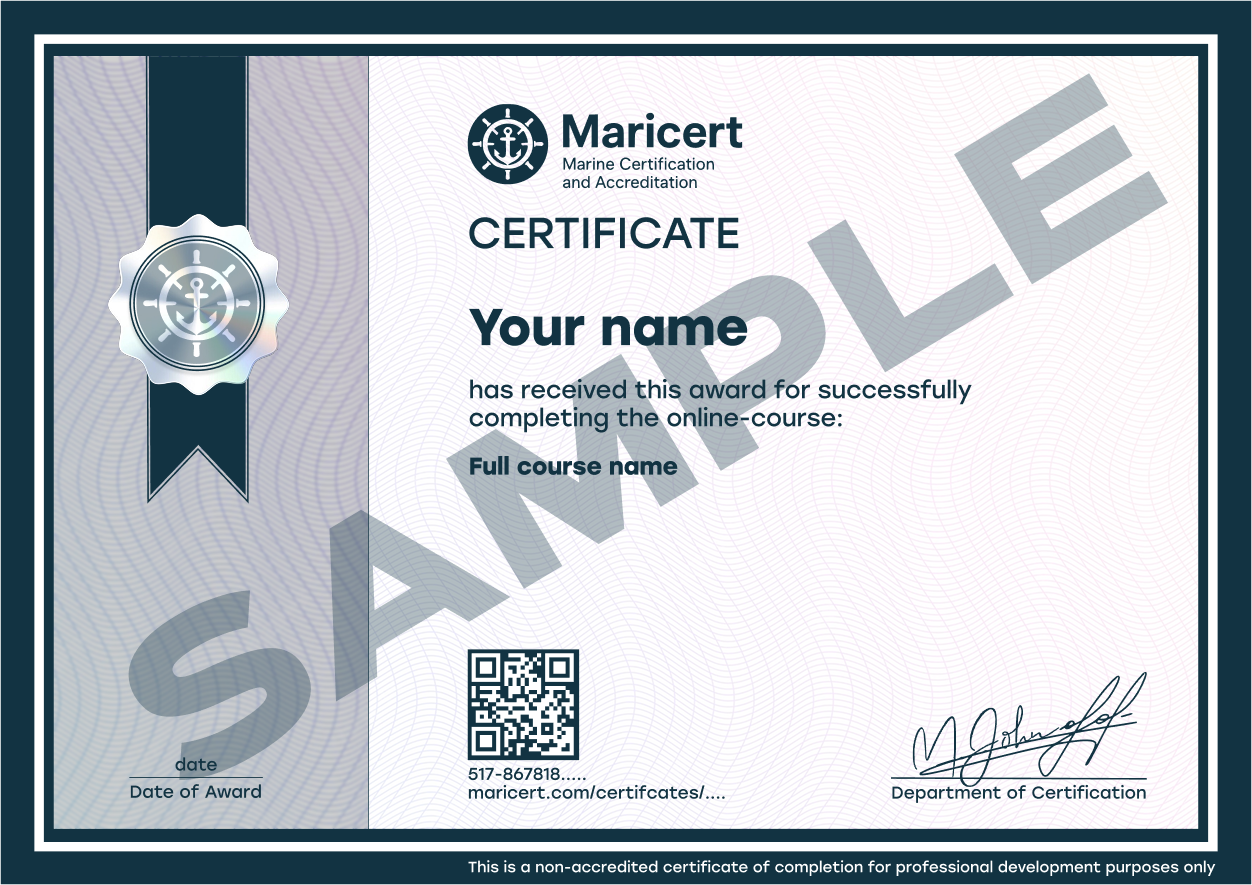

SEAFOOD TECHNOLOGY AND SAFETY PROGRAM
This course is part of the Seafood Seafood Innovation Practices Specialist (SIPS). After completing all SIPS courses and STSP courses, you’ll be eligible to receive the diploma, officially registered in verification database. You can share it on social media or add it to your CV to increase your chances of getting hired in the seafood industry — including сrab and fishing fleets, seafood factories, and etc.
Course description
This course explores the molecular methods used to identify fish species and verify the authenticity of seafood products. With a focus on both DNA- and protein-based techniques, you’ll learn how modern tools are used to detect fraud, ensure regulatory compliance, and maintain consumer trust. The curriculum covers species authentication challenges in processed seafood, introduces key molecular markers, and presents reference systems like tissue banks and genetic databases. You’ll dive into electrophoresis, HPLC, immunoassays, PCR, real-time PCR, FINS, and other forensic-level techniques used to detect and quantify species-specific traits. The course also covers the role of accreditation, bioinformatics tools like BLAST, and database management in seafood verification. By the end of this program, you’ll understand the strengths and limitations of each method and how to select the right approach depending on the sample type, processing level, and required resolution. Designed with a practical and scientific perspective, this course is essential for professionals involved in seafood safety, control, and authenticity verification.
What you’ll learn
- DNA and protein-based methods for seafood species identification
- The role of PCR, real-time PCR, and FINS in fish authentication
- Protein profiling techniques: electrophoresis, HPLC, immunoassays
- Use of genetic markers, tissue banks, and reference databases
- How to verify species in fresh, frozen, and processed products
- Tools like BLAST and qPCR for rapid and precise species detection
- Accreditation systems and regulatory frameworks in seafood traceability
- Strengths and weaknesses of alternative DNA-based methods
Who this course is for
- laboratory professionals and food authenticity specialists
- quality control and assurance managers in the seafood industry
- food safety inspectors and certification bodies
- researchers in marine biology, food science, and molecular diagnostics
- students and graduates in biotechnology, genetics, or aquaculture
- professionals responsible for traceability, labeling, and legal compliance
- anyone interested in the scientific and practical aspects of seafood verification
FAQ
First, please check your spam or promotions folder — sometimes emails land there. If you still don’t see anything, contact us at https://maricert.com/contact/ — we’ll check your order and grant access as soon as possible.
You can retake the test as many times as needed. There are no penalties or additional fees.
Yes. All lessons and tests are in written format. You can use Google Chrome with auto-translation or third-party tools. Our goal is to make learning accessible to everyone.
Absolutely. The platform is fully optimised for mobile. You can study from your phone, tablet, or laptop — whichever is most convenient for you.
You get 12 months of access from the date of purchase. You can study at your own pace. If the course isn’t completed within that period, access will be revoked without a refund. Refunds are not available once access is granted, as digital content is considered delivered in full (as per the UK Consumer Contracts Regulations 2013).
Your certificate will be sent to your email and also registered in the Certifier.io verification database. You'll receive a PDF version that you can attach to your CV.
Each certificate includes a unique ID and QR code. Employers can verify authenticity via the Certifier database or directly through the Maricert website.
Yes. We recommend including a direct Certifier.io link in your CV, cover letter, or LinkedIn profile to help build trust with employers.
No. Our courses are open to everyone, including beginners. You don’t need any maritime documents to enrol.
They can be added to your CV when applying for jobs on crabbing vessels, fishing fleets, seafood factories, and maritime logistics companies. They’re especially valuable for those with no prior experience.
Yes. While our certificates don’t guarantee a visa, they can serve as additional proof of qualifications when applying for seasonal or work visas.
We are not a recruitment agency, but our certificates and diplomas can improve your chances when applying directly to employers — especially if you’re new to the industry.
Yes. Maricert is officially registered in the UK Register of Learning Providers (UKPRN: 10098283) and complies with ICO (Information Commissioner's Office) data protection regulations.
Yes. You can purchase a course using another person’s email address or contact support to have access transferred after the purchase.

